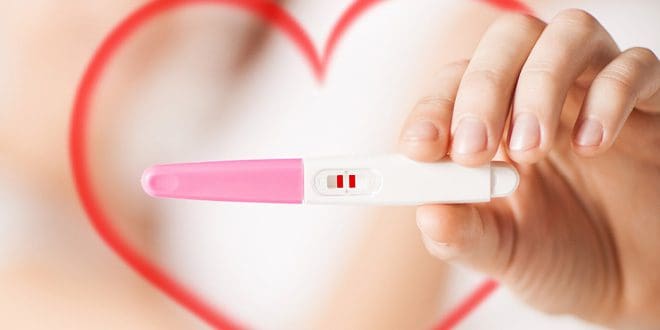By naturopath Margaret Jasinska
Trying to conceive? Your body gives you clues telling you when you’re most fertile.
Counting the days of your menstrual cycle can help you determine how regular your cycles are and the day you are likely to ovulate. This will help you determine when you are most fertile, and therefore when sexual intercourse is most likely to result in conception. A normal menstrual cycle is between 23 and 35 days. Cycles that are shorter or longer than this can be caused by a variety of factors, but they indicate that ovulation is probably not occurring. If there is no ovulation, there can obviously not be any fertilisation.
According to Chanley Small, Ph.D, researcher and reproductive epidemiologist at Emory University in the USA, women with 30 to 31 day cycles are the most fertile. Women with cycles shorter than 28 days are more likely to produce eggs of poorer quality.
To determine how long your cycle is, use the following method. Day one of your cycle is the day menstrual bleeding begins. Continue counting until the day before your next menstrual period begins. If your period began on 1st March and your next period started on 29th March, you have a 28 day cycle. Plot your menstrual period on a calendar for at least 3 months to get an average length for your cycle. Your cycle can vary in length slightly from month to month and that is usually not a problem.
In a 28 day cycle ovulation usually occurs on day 14. Women usually ovulate approximately 14 days before the start of menstrual bleeding.
Your most fertile time is during the two days before ovulation and one day afterwards.
All women are different and it is very imprecise to rely on the 14 day rule to indicate when you have ovulated. Luckily your body gives you several signs to indicate that ovulation has occurred.
Getting familiar with these signs, and tracking them for several months can help you become in tune with your menstrual cycle, and optimise your chance of conception. Changes in your cervical mucus and basal body temperature are useful indicators of ovulation.
Cervical mucus
The quantity and type of mucus your cervix makes varies during your menstrual cycle. Paying attention to your mucus is an easy and fairly reliable way to determine where you are in your cycle.
At the beginning of your menstrual cycle, oestrogen levels are low, therefore very little mucus is produced. As you get closer to ovulation, mucus production increases; mucus may be sticky, white, cloudy or milky. This indicates you are approaching your fertile phase.
Just before ovulation, mucus becomes slippery, stretchy and clear; this is commonly referred to as raw egg white mucus, because that is what it resembles. The presence of this type of mucus signals the most fertile time in a woman’s cycle. The egg white-type mucus facilitates the travel of sperm from the vagina, through the cervix, into the uterus and then fallopian tubes in search of an egg. Ovulation occurs one or two days after the development of this type of mucus. If you are trying to conceive it is recommended you have intercourse every day, beginning as soon as you detect egg white-type mucus.
After ovulation, mucus becomes thicker and cloudier. You may still be fertile during this stage, but only for two or three days at most. For the remainder of your cycle, the cervix produces mucus that is thick, sticky and acidic. The mucus stays around the opening of the cervix, acting to block the entry of sperm. Most women do not produce noticeable quantities of mucus at this stage, and feel more dry than at other times of their cycle.
You can check the type of mucus your cervix makes by looking for a discharge left on your underpants or toilet paper, or by inserting a clean finger into your vagina. Egg white type fertile mucus will stretch several centimetres between your fingers and it will look clear and mucus-like. Normally, you should only notice this type of fertile mucus once in your cycle, in the couple of days just before ovulation. A minority of women experience multiple batches of egg-white mucus during their menstrual cycle. This is common in women with polycystic ovarian syndrome. Some women never notice appreciable changes in their cervical mucus throughout their cycle. In most cases this is not a problem and it is still possible to get pregnant despite this.
If your cervical mucus is constant, does not go through changes, is irritating, itchy or has an offensive smell, you probably have an infection and it is important to see your doctor.
What happens if there is no detectable cervical mucus?
Some women produce very little mucus and this reduces the chances of conception. The most common factors to affect cervical mucus production include:
- Anti-histamine use and the use of other anti-allergy medication.
- Some antibiotics.
- Clomiphene; a medication used to induce ovulation in infertile women.
- Cough suppressants
- Some cold and flu and sinus medication
- Other medication including sleeping tablets, atropine, propantheline, some anti-depressants and some epilepsy medication
- Age. Women in their 20s produce greater quantities of cervical mucus for more days than women over 35.
- Being underweight. This affects oestrogen production; therefore less mucus is usually produced.
- Vaginal douching. Obviously this practice can wash away cervical mucus. Do not practice vaginal douching while attempting to conceive unless you are trying to overcome an infection and are under the guidance of a healthcare practitioner.
- Infection of the reproductive tract.
- Previous treatment for cervical cancer or pre-cancerous changes, such as cervical cone biopsy.
- Hormonal problems that result in anovulation (lack of ovulation).
- Stress
- Previous D and C (dilation and curettage)
Sometimes adequate cervical mucus is produced, but the mucus is inhospitable to sperm. This is commonly referred to as having hostile mucus. The mucus does not allow the sperm to survive inside the female reproductive tract and impedes sperm transport. Mucus may be hostile for the following reasons:
- Poor quality mucus due to poor diet and nutritional deficiencies.
- Too acidic. Mucus can be too acidic due to the following factors: too much alcohol, sugar, dairy products, white flour, gluten and red meat. All of those foods have an acidic effect in the body, whereas fresh vegetables and fruit have an alkaline effect.
- Genito-urinary infections produce hostile mucus.
- Food allergies can cause the production of excessively thick mucus that impedes the travel of sperm through the female reproductive tract.
Basal body temperature – body at rest temperature
Another way of determining when you ovulate is by measuring your temperature when your body is at rest. This method is cumbersome and not entirely accurate, but it can be used as a backup, in combination with other methods. This method is more useful for women who have regular menstrual cycles that are close to 28 days long. You will need to measure your body temperature with a mercury thermometer first thing in the morning when you wake up, before getting out of bed. Your body temperature remains fairly constant each day under normal circumstances, however just after ovulation your temperature rises by 0.2 to 0.5 degrees Celsius, and remains elevated until your next period. The rise in body temperature is caused by the progesterone released from the follicle after ovulation.
The basal body temperature test can tell you when you have already ovulated. It is often already too late to conceive once you’ve noticed that your temperature has risen; however if you take your temperature each day for several months you can watch for a pattern, and then plan intercourse in the day or two before your temperature is due to rise in subsequent menstrual cycles.
Women are most fertile the few days before their basal temperature rises, and are least fertile when their temperature has remained elevated more than three days.
Instructions for measuring your basal body temperature
Take your temperature the same time each morning, as soon as you wake up. You should only take your temperature if you have had at least 4 hours of solid sleep before waking. So if you have had a restless night, or gone for a bathroom trip four hours before waking, this method will not be as reliable. That may exclude a lot of women! For accuracy, your temperature should be taken at the same time each morning. Sleeping in late on the weekend can make it more difficult to see a pattern and link temperature changes to ovulation.
Several things can affect your temperature, thus making this method inaccurate; these include an infection or other illness, stress, alcohol consumption the previous day, allergies, iron deficiency, adrenal gland exhaustion, thyroid disorders and some medication. If used on its own, the basal body temperature method of tracking ovulation is not always reliable.
If you notice a rise in your basal body temperature after ovulation, and your temperature has remained elevated for more than 20 days, this could indicate you are pregnant.
Ovulation monitoring kits
There are several fertility monitoring kits available on the market that are very helpful for determining the fertile days of your menstrual cycle. Most kits work by measuring luteinising hormone (LH) levels in your urine. Immediately before ovulation, the body produces a large amount of luteinising hormone, which triggers the release of a ripe egg from the ovary. Ovulation test kits detect a surge of luteinising hormone in the urine, which indicates that ovulation will likely occur in the next 24 to 48 hours. This is your most fertile time and the optimum time for sexual intercourse that can lead to pregnancy. Ovulation monitoring kits are much less reliable in women with short or long cycles, or women with polycystic ovarian syndrome.
Some fertility monitoring kits measure oestrogen levels in the saliva. These kits detect an increase in oestrogen levels, approximately two to three days before ovulation. There is not as much evidence to support the accuracy of these kits.
For more information see the book Infertility: The Hidden Causes.









Leave A Comment